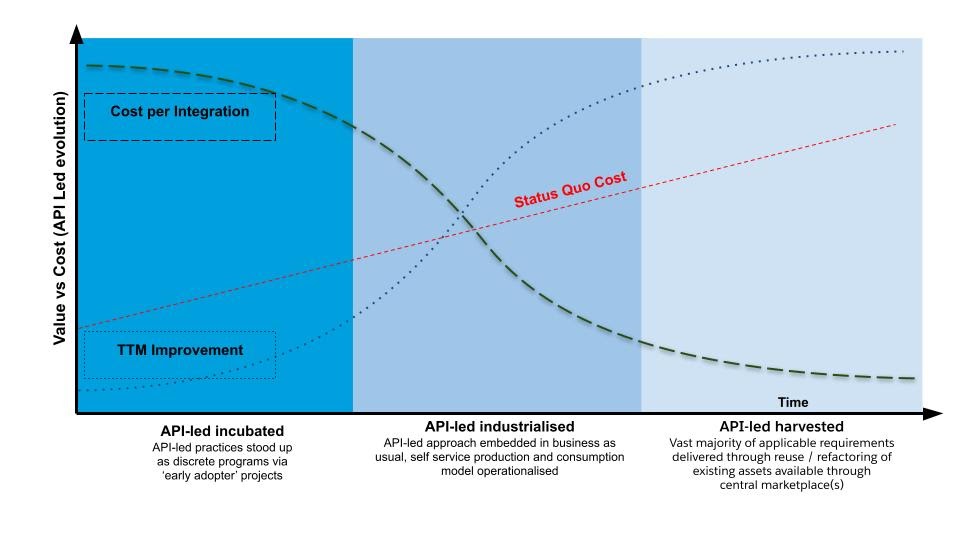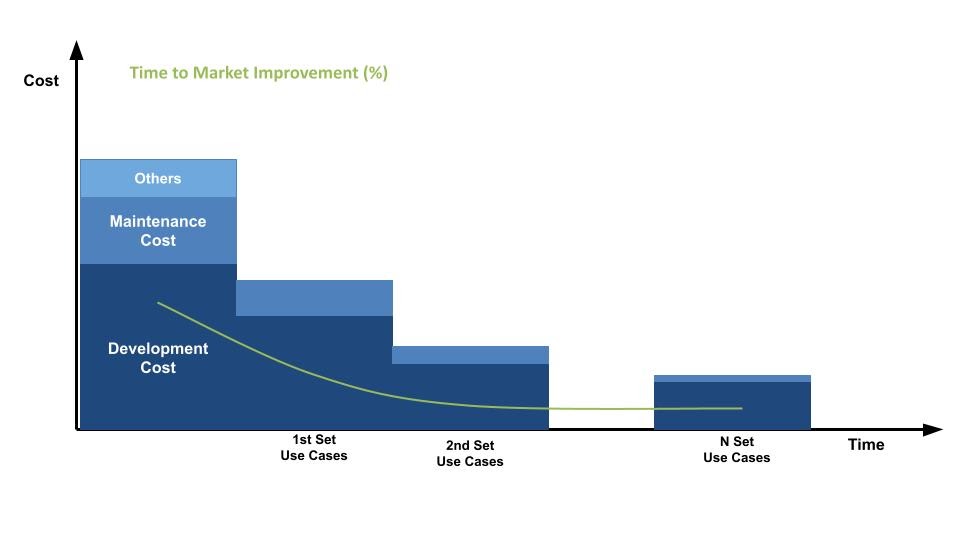There’s a lot that IT decision-makers must take into account when they choose an integration platform: Team needs, use cases to solve for, value proposition, potential money and time savings, and, most importantly, return on investment. Once you’ve landed on an integration platform, the work isn’t done yet. From there, it’s time to identify the integration strategy. Before you build an integration strategy, however, it’s important to identify metrics that allow your teams to showcase how this work aligns with the business and business priorities. Some questions may also arise along the way: Is it possible to monitor alignment with the business in real-time? What is the best way to communicate this alignment to the company?
In this blog, I will answer these questions, sharing the best practices to measure alignment between business objectives and integration strategy.
Base decisions on metrics that interest the business
When you’ve decided on a specific integration platform, on top of analyzing platforms and their costs, it’s likely that you also took into account other benefit metrics. Benefit metrics can include development cost savings, maintenance cost savings, the hours of our technology teams, and how quickly we could have 100% productive roles. Though these metrics are important to you as the IT decision-maker, it’s important to remember that the business may not have the same interest in these insights. The business focuses on what is directly related to the company versus technical details of integration implementation.
That is why it is essential to include, from the initial analysis, benefits and impacts on the business like increased revenue, reduced operating costs, improved quality, or increased numbers of satisfied customers. This helps you identify if there is interest in both the choice of the platform and opportunities for future alignment to the business. Another important metric to include for the business is highlighting the improvement of the time to market.
If you can meet the needs of the business while maintaining the level of service in less time, you will have the business on our side. The improvement in time to market begins with the use case, what you’re looking to solve with an integration platform, and ends in the conjunction of two well-known indicators: the reuse rate and the unitary integration costs.
Prioritizing and analyzing reuse rate to measure business alignment
By prioritizing reuse rate, IT teams can save themselves from having to design new integrations from scratch every time the need arises. The advantage of identifying the initial use case is that it ensures that you understand and perfectly agree with the business’s existing needs. At the same time, it allows you to explain these needs in a forecast of integrations based on the API-led model.
Combining the API-led model with the use case will define the number of APIs to develop and their forecast. But that is not all. If you have initially analyzed the need for the integration platform based on business value through use cases, you can establish a baseline API reuse rate.
Suppose you have taken into account all the benefits in your analysis. In that case, you will have a total value associated with the different steps to production APIs and the other production waves. Typically, each production wave will be associated with different use cases, each with the expected value to the business. You can translate the business need into use cases, an integration forecast, and an expected value based on the API-led model.
Measuring value is an exercise that requires precision and investment in time; it makes sense to do it at the initial moment when deciding on the integration platform. This value is based on an indicator that you can measure in real-time on the MuleSoft integration platform: the reuse rate.
When you map out the projects, you should identify both a value based on the total benefit and an indicator that will allow you to manage the achievement of that value.
All this is thanks to the combination of the following elements:
- The use case as the management tool
- API-led as the integration methodology
- A value identification exercise where you quantify all value elements
- The ability of the MuleSoft platform to measure the reuse rate in real-time
From this point of view, the integration platform’s total value is guaranteed if the reuse rate reaches the expected values according to the design that was carried out in the use cases.
In this way, the evolution of the reuse rate over time is an excellent indicator of alignment or alienation with the business. The risk of not applying a strategy based on an integration platform that takes these characteristics into account is, hopefully, a linear increase in integration costs.
Understanding the relationship between reuse rate and business alignment
The API reuse rate is not a static value over time. If you have correctly applied the API-led methodology, it will increase until it reaches a stationary value. In the first moments, it will have a low value since you are installing the platform, preparing the teams, and getting things off the ground. In these beginning stages, you are building the foundation for a composable enterprise.
But there will come a time when its value will stabilize, tending asymptotically to the team’s desired value. This expected value is necessary to guarantee alignment with the business.
In the following image, you can see how, as you reuse APIs, therefore increasing in the reuse rate, the unit integration costs decrease. The unit integration cost is the cost of each of the APIs or integrations.
Seen in another way, as you reuse APIs, the unit cost decreases and, by extension, the time to market improves. You can also observe that, in a normal situation, the integration costs grow linearly, if not exponentially.

In the same way, the unitary integration costs, the cost of an API in its complete life cycle, will decrease until it reaches its optimal value. Unlike the indicator of total costs, the decrease in unitary costs does not depend on the total number of APIs to integrate. Therefore, it is independent of the size of the projects or the integration waves to be carried out. It is also a simple measure to obtain at the end of the implementation of each service for the business. The interesting thing about this indicator, as we have seen, is that it is proof of economies of scale.
MuleSoft allows you to obtain the reuse rate throughout your projects. If this value evolves above the curve described, you will obtain the optimal value before the planned time but you must pay attention to the extra deployment costs.
However, if the value evolves below the curve described, you will be developing slower than required, so you will have to pay attention to what has made your teams slow down in the integration plan. For both trends, there will be nuances that will come from the integration unitary cost analysis. For example, your teams may develop faster because they have applied more agile development methodologies, not because they incur any type of risk.
At this point, we’ve reviewed how to measure the alignment of the integration with the business. However, you cannot report such alignment based on integration KPIs like reuse rate or unitary costs since these metrics don’t mean anything to the business. As we discussed at the beginning of this article, it’s critical that we land on a metric that both IT teams and the business prioritize: time to market.
Improving and showcasing time to market
If your objective is to transform your company into a composable enterprise, you must adopt integration strategies aimed at improving time to market.
We have already commented that the use case is the beginning of a conversation between business and integration that aligns the latter with the former. Additionally, we have determined earlier in this article that the reuse rate and its evolution over time will guarantee that this business and IT alignment is taking place. However, the reuse rate is not an indicator that sheds much light on the business. To solve this, you have to translate this measure into something that the business understands and can agree on as a standard measure that you are on the right track. The decrease in the unit cost of integration over time will fill that gap.
The overall reduction in integration costs is due to different benefits from MuleSoft: automation, automatic platform management, and security policies at the platform level.
However, let’s analyze the pure development component, regardless of other elements such as security, quality management, or maintenance. You will see that this is a function of the reuse rates. The following image illustrates how, as the total integration costs decrease at the beginning, and the unitary costs subsequently follow, you also see an improvement in the time to market.

In part, the first image in this article anticipated this behavior by showing that the unit integration costs decrease as you approach the stationary value of the reuse rate.
In that graph, we saw that, as teams improve the reuse rate in each of the integration projects that respond to a group of use cases, they are improving the time to market the following by a similar percentage because they employ assets already used previously.
If you analyze the pure development component of the integration unit cost, you would see how it decreases in each set of use cases and has a better time to market for the following. This improvement, which impacts development times and, by extension, time to market, is a plan with more possibilities of being accepted to present the alignment with the business.
Next steps to align integration strategy with business objectives
Historically, there has always been a difference between what we are capable of measuring in integration and how in business it measures its objectives. Now, with increasing pressures on IT teams, it is necessary to close this gap to demonstrate this alignment in language that is shared and understood by the business. The best option is to analyze, from the moment of decision making, which integration platform to adopt by applying this type of analysis. But even if the decision has already been made and you are a MuleSoft user but you are considering implementing more APIs on the platform, it is an excellent time to base your decisions on the reuse rate but communicate to the business based on the improvement in the time to market.
Feel free to ask the Mobilize Consulting Services team for help and dig deeper into the free tools and methodology.









